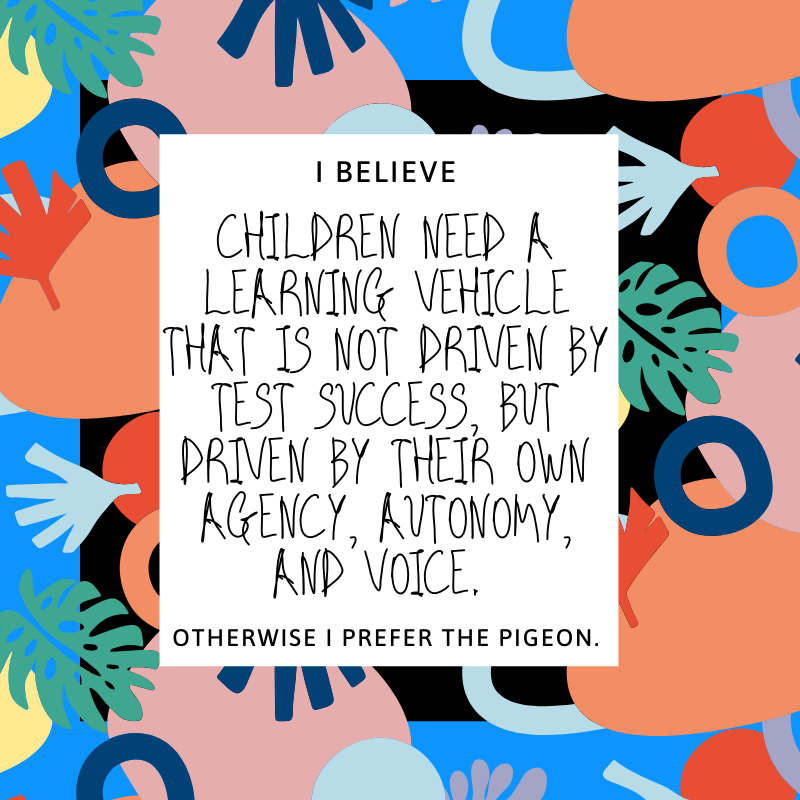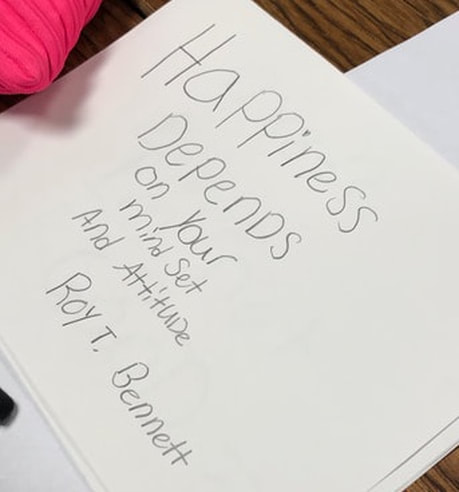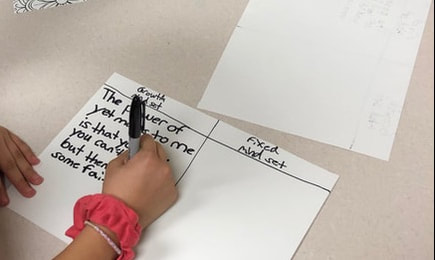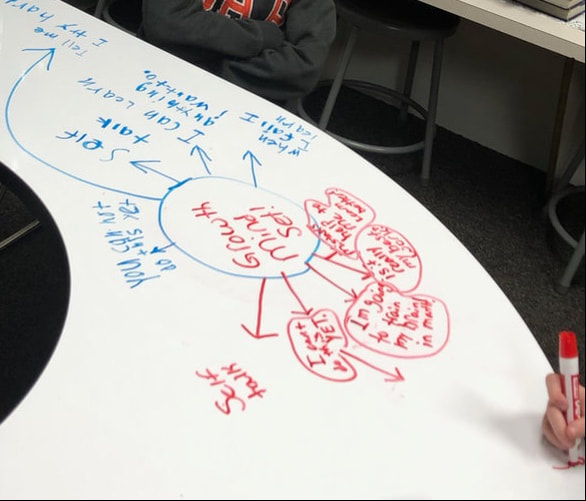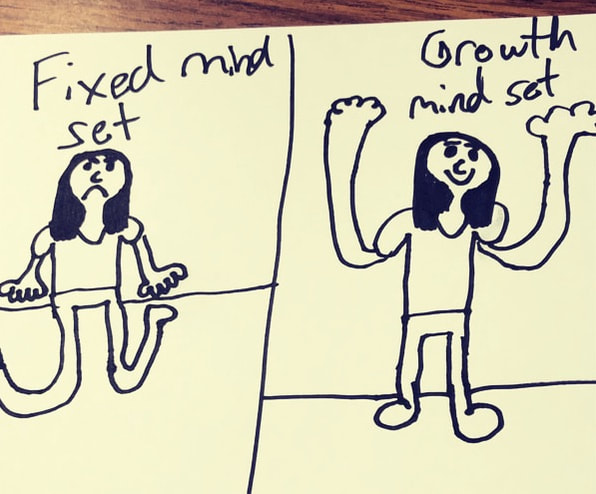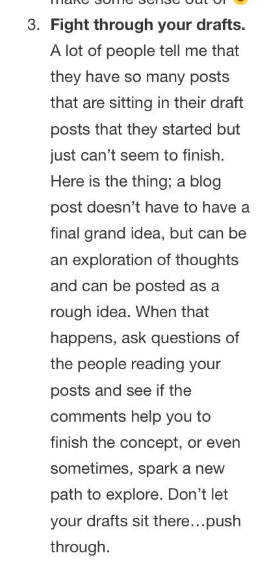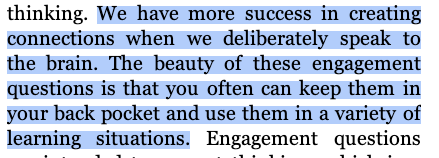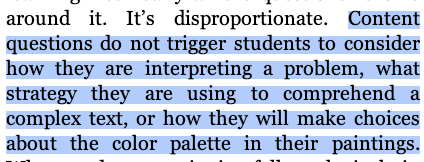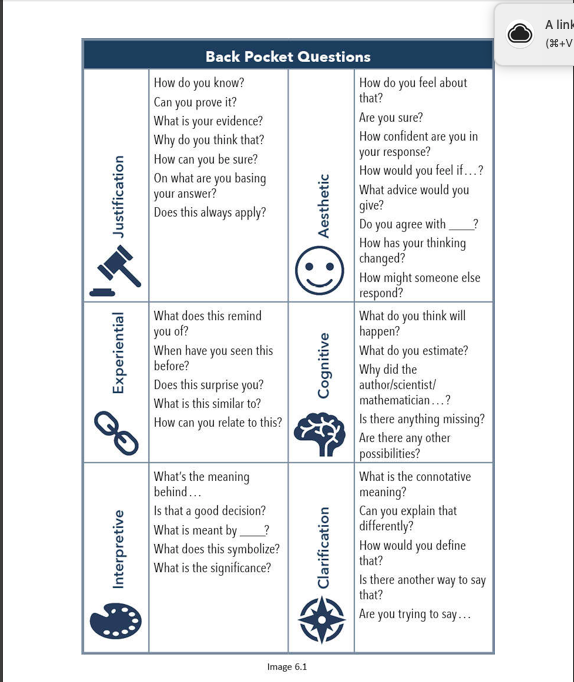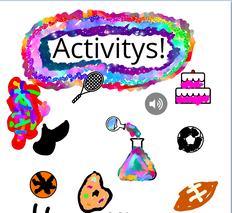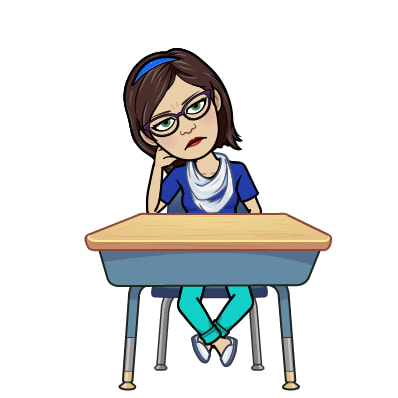|
Tuesday at school the internet was down. All day. I did not panic. I have tricks up my sleeve. But no doubt about it, I was flummoxed. I had plans. It was the day before Thanksgiving and I had things I wanted the kids to wrap up. But they could not. Because their project were tucked away in a place that was not accessible without wifi. Dang it. I really wanted to finish those before break. What did I do? Patched things together, pulled out the Scholastic News, had my scholars read books that they could hold, and the like. I had to reflect on my day. There was something unsettling about it. And I figured it out. Here's what I learned about myself that day: 1. I feel way more confined by time than I knew. I couldn't just break out and do something totally different. Art. Engineering. Music. Science. Hands-on things that teach students so much. I felt the pressure to "keep teaching" because that test is coming whether I like it or not. I did not realize I felt so constrained. It was a real eye-opener. 2. I am more of a control freak than I thought I was. Why didn't I turn it over to the kids and ask them what they wanted to do? I know in my heart of hearts that they would have had brilliant ideas. I am not giving students as much choice as I think I am. 3. I have a hard time switching gears. They were so excited about practicing and performing the plays they wrote. They just had to do it that day because we start poetry next week. It's like the scales came off of my eyes. I did not know I felt such constriction, wanted so much control, and do not easily switch gears. Makes me sad. Because that is not me. As the universe works in mysterious ways, I had already been playing with the notion that my class was becoming too structured, teach-to-the-test, too teacher-centered. I was pondering what I could do to get back to my heart practices and deeply held values. I like to summarize my thoughts and give myself an action plan. So, here goes. I have succumbed to "backwards planning" that has me teaching to the test. I have tightened the reigns so much that I am not allowing the creativity and choice I value in my classroom. I have been more teacher-centered than student centered.
Action plan? Simple. Integrate more opportunities for messiness of learning. I may not get as many grades in. I may not get the top score in my evaluation because I'm not following the (optional) plan. There may be more noise. . Creating is messy. Letting students drive their own learning is messy. Collaboration is messy. But, inspired by my PLN on Twitter like Emily Potter and her stop gap motion turkeys, I feel inspired to be true to myself and to leave room for my students to be true to themselves.
1 Comment
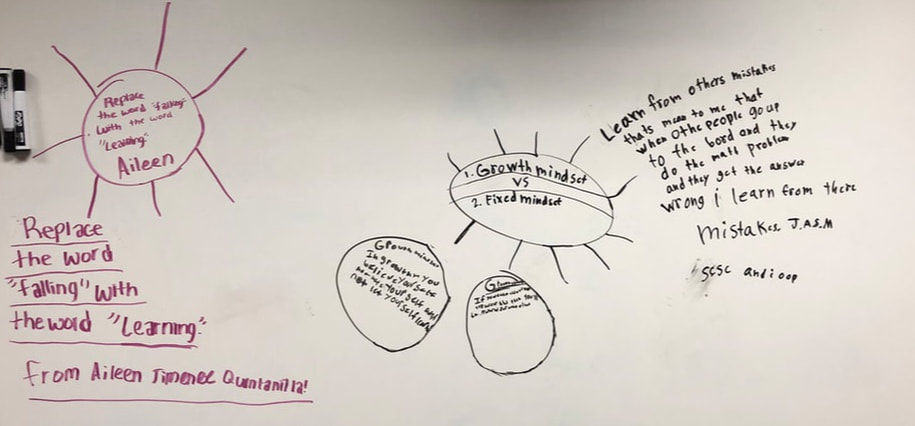 Last Thursday we had our first after school session of our "Science of Learning" workshop. Inspired by Visible Learning/John Hattie's work and Powerful Teaching: Unleash the Science of Learning by Pooja K. Agarwal and Patrice M. Bain, I decided to have an afternoon workshop where we:
I had a plan. It started out well. I "taught" them about Growth Mindset. We webbed out our learning. We played a Quizizz about Growth Mindset. Now time for the fun! Write a script.
|
| I just recently cracked Connie Hamilton's book Hacking Questions back open and once again, my mind is blown with her practical, spot-on ideas. It's one of those books where the author articulates things you have felt before AND shows you things you have never even thought of before. Here is what I'm learning from her right now in her chapter entitled, "Fill Your Back Pocket." |
Fill Your Pocket: Prepare a handful of metacognitive questions.
Some of the things that strike me as important in this chapter are:
1. The importance of metacognitive questions, not just content questions
2. The importance of teaching students the QAR Question-Answer-Response model
3. "Attend to verbs" Instead of saying, "How's it going?" ask, "How is _______ going? (comparing, contrasting, etc.)
4. Think-alouds matter. (Sometimes it feels like read-alouds are discouraged in favor of reading articles and answering questions.)
5. Follow content question with another question.
1. The importance of metacognitive questions, not just content questions
2. The importance of teaching students the QAR Question-Answer-Response model
3. "Attend to verbs" Instead of saying, "How's it going?" ask, "How is _______ going? (comparing, contrasting, etc.)
4. Think-alouds matter. (Sometimes it feels like read-alouds are discouraged in favor of reading articles and answering questions.)
5. Follow content question with another question.
Confession: I'm not great at always preparing questions for a lesson.. (Is there terribly awful to admit?) BUT I am learning from Connie how to do that, be more intentional about my questions. I want to do that, so that's step one. These Back Pocket Questions give me a concrete way to move in that direction.
Action Plan: Plan for questions in lessons. Write them down. Post these questions in key locations around the room, so I can refer back to them.
I am really trying to have the students think about their thinking this year, so this is a wonderful resource for me as I keep working towards that goal.
Action Plan: Plan for questions in lessons. Write them down. Post these questions in key locations around the room, so I can refer back to them.
I am really trying to have the students think about their thinking this year, so this is a wonderful resource for me as I keep working towards that goal.
For the purposes of this post, here is my definition of design and the dictionaries definition of aesthetic:
design: using space, shapes, and color to make a document aesthetic
aes·thet·ic:
design: using space, shapes, and color to make a document aesthetic
aes·thet·ic:
- concerned with beauty or the appreciation of beauty.
"the pictures give great aesthetic pleasure"
- a set of principles underlying and guiding the work of a particular artist or artistic movement.
"the Cubist aesthetic"
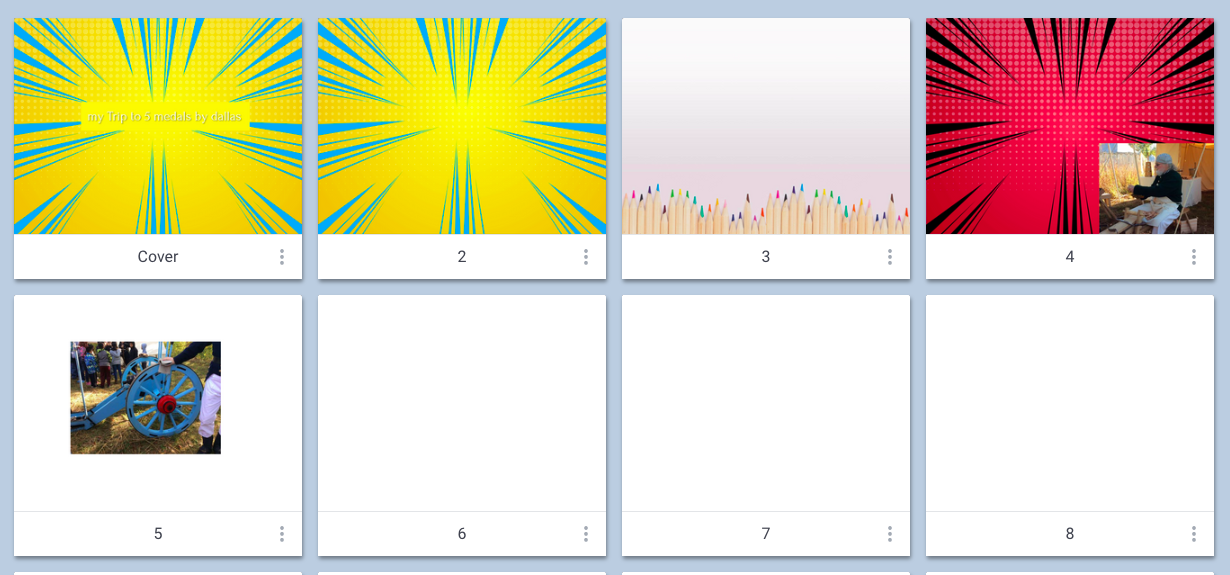 2 hours later...
2 hours later... Have you ever seen this in your classroom?
Student A is creating an online book. His/her pages are filled with random pictures, different fonts, different backgrounds, disconnected drawings, and speech bubbles; but there is no content or words.
Have you ever heard yourself say, "Put the text in first, then you can go back and fancy it up with colors, fonts, and pictures."? (Me. Yesterday.)
oI'm all for integrating design into projects. It adds more bang for your buck as students build spacial and visual skills.
But I know all to well there are pitfalls a' plenty.
One "pitfall" is this: Design is not tested on our high stakes state test.
The other pitfalls often boil down to this:
Sometimes some students focus only on design and neglect content.
I get this. I've seen this. I know this. I've done my best to stop this. But here's the thing:
But I know all to well there are pitfalls a' plenty.
One "pitfall" is this: Design is not tested on our high stakes state test.
The other pitfalls often boil down to this:
Sometimes some students focus only on design and neglect content.
I get this. I've seen this. I know this. I've done my best to stop this. But here's the thing:
And here are my reasons why:
In summary, there are pitfalls to offering design as part of a project, but I believe the benefits outweigh the potential negatives. I challenge myself to keep offering design opportunities in the learning experiences I plan for my students. I believe in them. And I believe in them.
- When students have an opportunity to include drawing, shapes, color, fonts, and sizes into learning experience, they use a different part of their brain. Specifically, the creative part. Writing is creative. Math is creative. Science is creative. We allow for these ways to express creativity, but often neglect (and downplay) the visual and spacial aspects of creating.
- A quick search for "Jobs that require visual and spacial skills" comes up with a plethora of options from surgeons to poets to graphic designers. (Jobs that require spacial and visual skills) By integrating design, we support the students who will enter careers that require visual and spacial skills.
- The world values strength in reading, writing, math, and science. I take it as part of my mission to value art and design and music in my classroom. I strive to encourage and support my students who have strengths in these areas.
- In a world of tests and worksheets and black and white and more tests, integrating design makes for a happier learners (my students and myself:).
- In my experience, integrating design motivates my students. Students beg me to let them write new stories in Book Creator. Students ask me to draw before they write a story. I'm sometimes hesitant, but at ICE 2019 last week, Manuel Herrara (@manueldraws, http://manueldraws.squarespace.com) encouraged us to let students draw FIRST. Create a storyboard. Their writing will be more detailed when you do so.
- Choice. Students who have a choice as to how they will show what they know have a stronger investment and feeling of autonomy.
In summary, there are pitfalls to offering design as part of a project, but I believe the benefits outweigh the potential negatives. I challenge myself to keep offering design opportunities in the learning experiences I plan for my students. I believe in them. And I believe in them.
When I don't feel like I have anything to write, that is a red flag for me. It means I have not been reflecting like i hope to. Because there is PLENTY to reflect on every day.
Funny as I sit, things come forth in my mind. When I am on the go with a busy life and a busy mind, reflection is difficult.
So, there's my first thought. Slow down, Jill.
Visible Learning
Here's the problem with using district assessments to assess whether how I am teaching is working. Teach for 4 weeks, assess, repeat. And if the test is a bad one....there goes an hour of my students' time they will never get back.
I am still looking for a systematic way to assess in a "bigger" way. My exit tickets are mini-assessments, but I would like to get more scientific/systematic about collecting data to see if my teaching is effective.
I am definitely teaching differently this year, (clearer about objectives, interactive slides, daily exit tickets on content and effort) so I should be able to measure if it is working! Just need to keep making sure the tests are valid.
Action plan: Revisit Mr. Ryan Higbea @MrRyanHigbea spreadsheet and be more intentional about pretests. I think I fear pre-tests because they take up instructional time. But if I let the kids "opt out" of questions they have no idea about, it will go faster.
Moving
My reading workshop has been going smoothly, but I feel uncomfortable about how much my students sit for those 90 minutes. Plus, I have a whole group lesson, then students read to self and do vocabulary work while I confer with students. I need to integrate more time for discussion and partner work.
Action Plan:
Use collaborative structures during the lesson.
Wagon Wheel
Mill to Music
Scoot
Ask myself every morning: How will the students be moving today? When will my students have discussions today?
I am committed to walking forward and not panicking. Just doing what I can when I can. That clears up a lot of space in my mind and heart.
Two action plans. That'll do for now. And the big third plan: slow down. I just had to sit for a minute.
Funny as I sit, things come forth in my mind. When I am on the go with a busy life and a busy mind, reflection is difficult.
So, there's my first thought. Slow down, Jill.
Visible Learning
Here's the problem with using district assessments to assess whether how I am teaching is working. Teach for 4 weeks, assess, repeat. And if the test is a bad one....there goes an hour of my students' time they will never get back.
I am still looking for a systematic way to assess in a "bigger" way. My exit tickets are mini-assessments, but I would like to get more scientific/systematic about collecting data to see if my teaching is effective.
I am definitely teaching differently this year, (clearer about objectives, interactive slides, daily exit tickets on content and effort) so I should be able to measure if it is working! Just need to keep making sure the tests are valid.
Action plan: Revisit Mr. Ryan Higbea @MrRyanHigbea spreadsheet and be more intentional about pretests. I think I fear pre-tests because they take up instructional time. But if I let the kids "opt out" of questions they have no idea about, it will go faster.
Moving
My reading workshop has been going smoothly, but I feel uncomfortable about how much my students sit for those 90 minutes. Plus, I have a whole group lesson, then students read to self and do vocabulary work while I confer with students. I need to integrate more time for discussion and partner work.
Action Plan:
Use collaborative structures during the lesson.
Wagon Wheel
Mill to Music
Scoot
Ask myself every morning: How will the students be moving today? When will my students have discussions today?
I am committed to walking forward and not panicking. Just doing what I can when I can. That clears up a lot of space in my mind and heart.
Two action plans. That'll do for now. And the big third plan: slow down. I just had to sit for a minute.
As part of my Visible Learning journey, I have my students filling out an exit ticket (Google) form every day. It takes them about 5 minutes. It is evolving right in front of my eyes and I have to say, it is very exciting to me. ?
This summer I read Visible Learning. It was a lot of theory and part of my thought, "Just get to the good stuff." But I stuck with it and am so glad I did. Here is why. I really didn't know where to start this fall, with all of my new learnings. With some support from some VL gurus, I made my small plan and set forth. My main two things were daily exit tickets and having clear objectives and criteria.
As the exit ticket has evolved, it has become a lighthouse to my teaching. Students report on their effort, understanding, and let me know if they have any questions or comments. I've gotten comments like "Please make it less confusing." and "Could we have more work?" Along with nice comments like, "Thanks for teaching us. I know you had to plan for it."
The questions on my form include:
What I added recently was "forcing" them to write the learning goal for the day (I had been giving them multiple choice) and also giving them one or two multiple choice questions testing them on the content. WOW. How eye opening! In one place I can see if I succeeded in being clear about the objective for the day. And here's what I am becoming....my own evaluator and activator. Kinda by stumbling into it, I have to say.
I thought I had to do some big pre-test and post-test to see if I was being effective (and I am not ruling that out for future analysis). I tried having small 3-5 question low stakes quizzes. But something wasn't working. It wasn't giving me the information I wanted about how I was teaching. These tiny-bite questions in my exit ticket are so illuminating.
Basically, I have super-sized my exit tickets and committed to doing them daily. This is growth for me. And for that, the celebration comes from joy of learning.
This summer I read Visible Learning. It was a lot of theory and part of my thought, "Just get to the good stuff." But I stuck with it and am so glad I did. Here is why. I really didn't know where to start this fall, with all of my new learnings. With some support from some VL gurus, I made my small plan and set forth. My main two things were daily exit tickets and having clear objectives and criteria.
As the exit ticket has evolved, it has become a lighthouse to my teaching. Students report on their effort, understanding, and let me know if they have any questions or comments. I've gotten comments like "Please make it less confusing." and "Could we have more work?" Along with nice comments like, "Thanks for teaching us. I know you had to plan for it."
The questions on my form include:
- What was the learning goal for the day?
- Did you accomplish it?
- If so, why did you accomplish it? (I paid attention, I wanted to learn, Ms. Hostetler's instruction was clear, I asked questions, etc.)
- How do you know you accomplished it? (criteria)
- How much effort did you put forth today?
- Tomorrow's goal is........how much do you know about this goal?
What I added recently was "forcing" them to write the learning goal for the day (I had been giving them multiple choice) and also giving them one or two multiple choice questions testing them on the content. WOW. How eye opening! In one place I can see if I succeeded in being clear about the objective for the day. And here's what I am becoming....my own evaluator and activator. Kinda by stumbling into it, I have to say.
I thought I had to do some big pre-test and post-test to see if I was being effective (and I am not ruling that out for future analysis). I tried having small 3-5 question low stakes quizzes. But something wasn't working. It wasn't giving me the information I wanted about how I was teaching. These tiny-bite questions in my exit ticket are so illuminating.
Basically, I have super-sized my exit tickets and committed to doing them daily. This is growth for me. And for that, the celebration comes from joy of learning.
I used to think, "I have to write a blogpost." Now I think, "I have to let myself write a blog post." I've come to appreciate the benefits of writing down my thoughts and reflections. I enjoy writing. There's the rub. In my mind, other things take prescient. I have my school work. I have my fun. But blogging falls in a bit of a foggy area, because it is both and it is neither. And now I see it. Because I blog. Just by naming it, I am more aware of it and will act accordingly. I will craft out time to blog, like I do for lesson planning, family gatherings, walking, being with friends, and watching cheesy shows.
And now you've read the shortest blog post ever. I'm off to write another one! 💟
And now you've read the shortest blog post ever. I'm off to write another one! 💟
What is the purpose of our Google Sites Portfolios?
1. To house finished work and reflect on it
2. To see growth over the months
3. To house ongoing data
4. To help students make choices about their learning
We just finished up our "Window A" unit, so I took this last week to help kids get items into their portfolio. Here are two things we discovered last week (I love learning new things with my students!):
1. To house finished work and reflect on it
2. To see growth over the months
3. To house ongoing data
4. To help students make choices about their learning
We just finished up our "Window A" unit, so I took this last week to help kids get items into their portfolio. Here are two things we discovered last week (I love learning new things with my students!):
Embedding a Book Creator Book
|
We published our personal narratives on Book Creator last week and put them into our Google Site Portfolio. I love discovering with my students! Although we use Seesaw a lot of the time in my classroom, I want certain things to go onto their portfolio site for parent-teacher conferences. (Things they haven't seen yet.) My next step is to have them reflect on the writing process, what they learned, what they're proud of, a goal they have for our next writing project, etc. I think I will keep it simple and have them record it on the Chromebook camera and then upload it to their site.
|
|
Entering Data
My students have one page on their site devoted to data. My next goal is for them to add some of their goals on this page as well. Last week we figured out how to put our reading data onto our data page. It was a disaster at first (I hadn't made a copy for each student, so you can imagine how that went down.), but then we figured it out.
|
|
Now, where do we go from here?
1. Stay consistent, always post a writing assignment after a 4-week instructional unit. 2. I am having badges created so students can earn badges for their 40 Book Challenge (Thanks, Book Whisperer). They would record what they read, too. 3. Keep putting data in whenever possible. 4. Support students in creating goals. 5. What about their blogs? Not sure where to go with their blog page. I will put that on the side burner for now. |
I'm committed to not panicking about this. It is my first year and I will set my intentions and follow through. I will keep reflecting. But I'm not going to feel an urgency to get more, do more, document more, etc. I welcome feed back on my journey!
